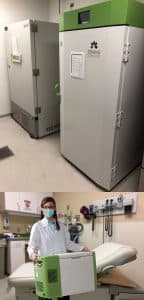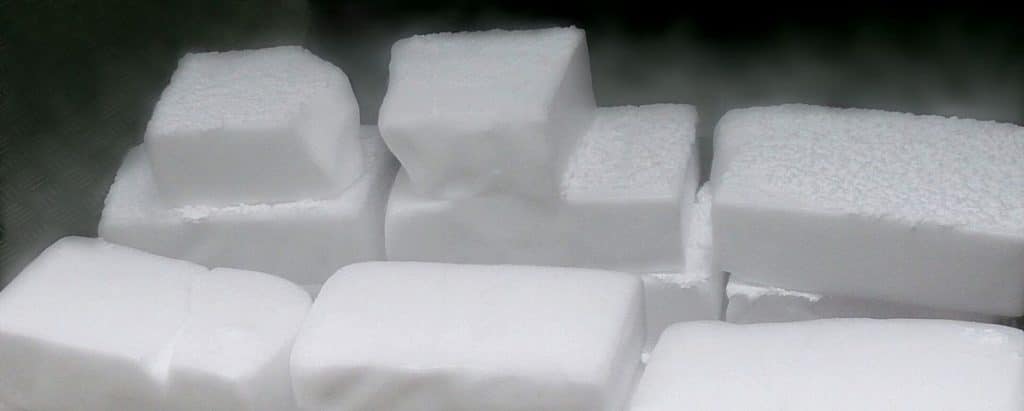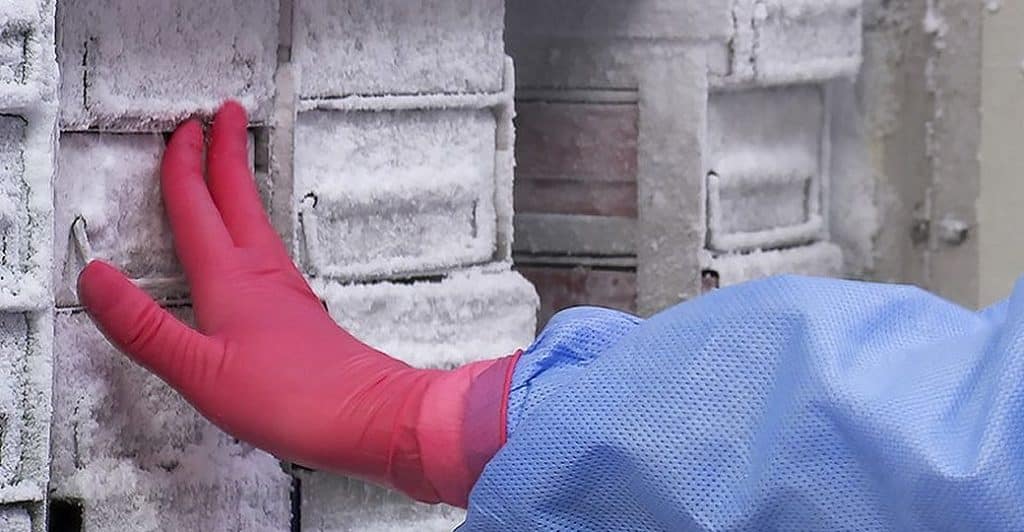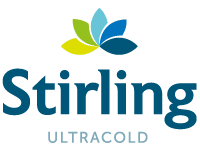Ultra-low temperature (ULT) freezers have become a necessity for organizations handling temperature-sensitive research specimens. This essential cold storage equipment safely preserves the cold supply chain for pharmaceutical, biotechnology, life sciences and healthcare industries. With the recent ultracold temperature requirements of mRNA-based biological materials, ULT cold storage emerged as an essential enabler of biologics storage, transport and distribution. Here are some best practices for understanding ULT freezer technology and its important connection to pharmaceutical cold chain logistics in the last-mile delivery of temperature-sensitive pharmaceuticals.
What are the ULT Freezer Options?
Ultra-low temperature storage is critical to protecting a broad range of biogenetic materials such as cells and tissues, and biomolecules such as antibody proteins and messenger RNA (mRNA), from denaturation and heat damage. Ultra-low temperatures typically range between -40°C to -86°C (-40°F to -122.8°F), although Stirling Ultracold freezers extend that range up to -20°C (-4°F).
 Compressor-based ULT freezers achieve ultracold temperatures with two compressors and cooling loops in a cascading arrangement continuously cycling between on and off states. These freezer systems are typically heavy, noisy, produce a lot of heat, require high voltage power and are often impractical for deployment in the last mile of the pharma cold chain, particularly in clinical and administration sites.
Compressor-based ULT freezers achieve ultracold temperatures with two compressors and cooling loops in a cascading arrangement continuously cycling between on and off states. These freezer systems are typically heavy, noisy, produce a lot of heat, require high voltage power and are often impractical for deployment in the last mile of the pharma cold chain, particularly in clinical and administration sites.
Stirling Ultracold’s line is unique to the industry because they are lightweight, space-efficient ULT freezers that employ free-piston Stirling engine technology to reciprocate a piston and displacer in an energy feedback loop, producing cold air that moves down a gravity-driven thermosiphon. This includes the uniquely portable ULT25NEU freezer appliance, which offers the same temperature controlled range and stability as larger Stirling ULT models in a 21 kg/46 lbs. size that can be plugged in and placed anywhere in the clinical environment.
Advantages of ULT Freezers Compared to Alternatives, Such as Dry Ice
- Precise and reliable temperature control in a wider temperature range, with integration of onboard, secondary and remote temperature monitoring
- Unlike working with dry ice containers or packaging, commonly available gloves are the only personal protective equipment (PPE) that is needed to work with ultra-low freezers.
- No significant personnel risks or ventilation requirements for freezers to operate
- Easy and organized access to sample inventories at various scales with integrated freezer racking that can be adapted to pharmaceuticals packaging
- Maximized storage capacity in a smaller working space
- Stirling technologies enable the use of compact and portable ULT models that can be deployed quickly in the cold chain management to service even remote, poorly powered communities.

From a logistics standpoint, ULT freezers are the best way to preserve the pharma cold chain long-term. Dry ice is not a permanent solution or exact science and requires regular refill with secondary monitoring to maintain the temperature setpoint.
Legacy ULT Models vs. the Latest Compact, Infrastructure-Ready ULT Technology
Advancements in ULT technology, such as the Stirling engine, have improved significantly over the last 10-plus years. There are many benefits to upgrading and replacing older ULT freezers with new high-efficiency models.
- Energy efficiency upgrades have led to considerable reductions in energy use, energy costs, HVAC costs and operating carbon footprint.
- Energy efficient models require less electrical, backup and HVAC infrastructure, making them easier to deploy in existing distribution and clinical facilities.
- High performance insulation in freezer cabinets now provides better temperature controlled uniformity.
- Environmentally sustainable refrigerants reduce climate impact.
- Modern alarm, data logging and remote temperature monitoring capabilities enable pharma cold chain of custody and audit trails.
- Stirling freezers require less floor space and ongoing maintenance compared to other ULT models.
Considerations When Purchasing a New ULT Freezer for Last-Mile Pharmaceutical Cold Chain Logistics
- Choose ULT freezers with the widest temperature setpoint range to optimize ultracold storage coverage over a broad range of biologics and clinical development phases.
- Look for infrastructure-ready models that can minimize energy consumption, have low heat output and HVAC loads and models with a wide voltage range and universal power built in.
- Opt for freezers with the smallest freezer footprint, maximum storage capacity and portability which can provide flexibility within the clinical setting.
- Select ULT models with integrated or cloud-based temperature monitoring data services.

Other Important Cold Chain Management Considerations
While most think the initial purchase price of a ULT freezer is the most important factor, there are other questions that should be asked when buying a new unit.
- Can custom high-density storage racks and boxes be utilized to maximize the interior cabinet space?
- When electrical supply is disrupted, is there a backup cooling system in place or can one be added to the freezer? Options include liquid nitrogen or carbon dioxide.
- Consider the big picture when purchasing a new ULT freezer. The initial purchase price may be lower, but what are the floor space costs, HVAC cost impacts, energy consumption costs and maintenance costs? You might be surprised to find that the cheapest purchase price might not be the cheapest freezer in the long run.
Maintaining Efficacy in Last-Mile Pharma Cold Chain and Patient Point of Use
One of the most significant challenges of pharmaceutical products patient administration is maintaining safe and effective doses over long holding periods in hospitals, clinics and pharmacies. In the past, these facilities have rarely been equipped with ULT freezers. Conventional ULT freezers are typically too expense, bulky and noisy for this type of clinical setting and dry ice does not provide the long-term temperature stability needed to safely store many advanced temperature-sensitive materials like mRNA.
In the last mile of the cold chain management, many are now opting for Stirling undercounter ULTs, benchtop or portable ULT appliances, which are ideal for use in small, rural or remote locations. These smaller units can be easily moved throughout clinical sites, even using alternative power sources, accommodating universal voltage requirements for global deployment by simply changing the power cord. These unique, compact models can provide point-of-use clinics peace of mind with precise temperature setpoint control and the ability to monitor and log dose temperatures for a continuous audit trail. Using these small ULT freezers will also help avoid last mile cold storage bottlenecks and get to patients faster, including populations in developing regions of the world.

The Future of Pharma Cold Chain and Precision Medicine Logistics Looks Bright
With COVID-19 storage bringing ULT freezers to the spotlight, this ultracold storage equipment is becoming an integral factor in all phases of the coming cell and gene revolution. Because the limited life span, supply chain access and temperature control of dry ice is not a reliable method for protecting these biological materials over extended periods of time, innovative ULT storage applications are paving the way for pharmaceutical companies, logistics providers and clinical point-of-care facilities to scale up their ultracold storage capacity.








